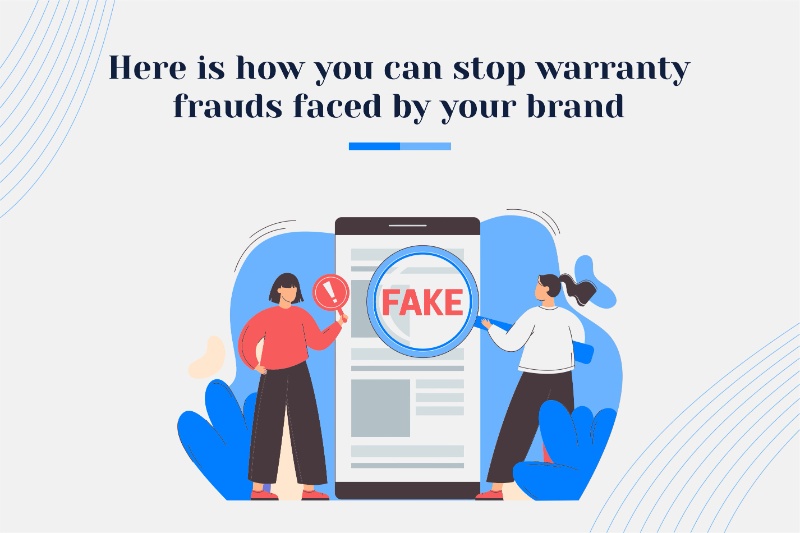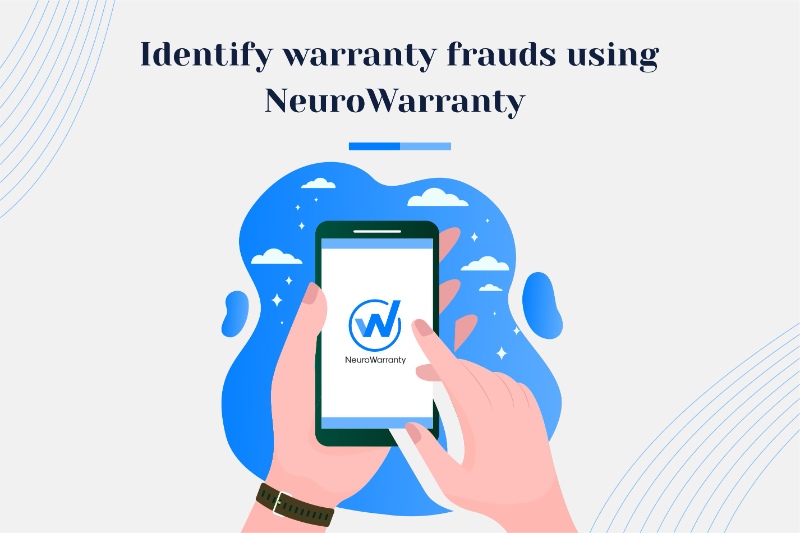
Worldwide warranty frauds are costing brands roughly 2 - 4 % of their profit shares, and although the number may seem small, as brands increase their sales, a loss of 4% of profit shares can result in huge revenue losses.
What is a Warranty Fraud?
To understand warranty fraud, a brief background of warranty claims is needed. Warranties are terms of contracts that accompany the sale of most products. Under a warranty, a manufacturer agrees to repair or replace a defective product, subject to certain limitations. Often limitations are directed to time or usage – a 90-day warranty or 50,000-mile warranty, for example.
Warranties can also be subjective to specific conditions laid down by the manufacturer and cover only specific parts of the products rather than the whole product. Brands try to make their warranty policies as vast and as long as possible so as to give their end customers an unparalleled post-sales experience and retain them for future sales.
Types of Warranty Frauds -
Warranty fraud can be difficult to detect, especially without skilled resources, processes and controls in place -- e.g. internal audit departments, anti-fraud policies, and formal fraud risk assessment. As brands look forward to providing the best customer experience, a lot of such repetitive and fraudulent claims are left in the suspicion stage.
A manual warranty process can lead to several warranty frauds, and as these frauds are mixed with real customers who have lost their warranty cards and need assistance with their claims, it is impossible for brands to differentiate between fraudulent claims and genuine customers.
Duplicate products:
If customers love your products, there is a high possibility that counterfeit/ look-alike products of yours are floated in the market with your brand name. Your brand name is used by the counterfeit & sell substandard products in your name. This, not only increases your warranty claims, but customers also lose trust in your brand.
Customer Frauds:
A large chunk of fraudulent claims come from fraudsters who mix up with real customers who end up losing their warranty cards and bills. Also, customers at times intentionally provide an out of the warranty product under claims.
About 10-15 per cent of warranty claims are classified as intentionally fraudulent (as against typos or accidental errors, which are easily detected during verification).
By eliminating fraudulent claims early in the process, you not only save money but also precious time and resources.
Which brands suffer the most from warranty fraud?
Statistically, consumer electronics and consumer products brands suffer the most from warranty fraud, but it is not a common cause for brands across segments.
Brands that have a digital warranty solution have managed to reduce their fraudulent warranty claims to less than 0.1% and brands that continue to use a manual warranty process face a disproportionate amount of fraudulent claims.
The reason is, that brands that use a manual warranty have no process of differentiating between fraudulent and genuine claims. And in order to not dissatisfy real customers, they end up giving a warranty to a large number of counterfeit products.
How can brands stop warranty fraud?

Warranty fraud detection is undertaken by brands to ensure that they are only covering legitimate warranty claims. Brands can detect fraudulent claims by replacing their manual paper-based warranty process with a QR code-based warranty management solution.
A digital warranty solution works by
Serializing your Products -
You should serialize your products so that every product can be uniquely identified and tracked at any point in the supply chain.
The benefits of serializing are when any product comes for warranty claims, you can track details like when was the product manufactured and who was the supplier/ OEM. This will help in tracking which supplier is using the wrong product.
Replacing Paper base warranty cards -
An advanced digital warranty solution like NeuroWarranty replaces your paper-based warranty cards with unique QR codes which are placed inside the product packaging. Scanning the QR code takes the users to a web app that allows them to upload their purchase claims, authenticate their purchase and register a warranty for future claims.
This process, makes it impossible for warranty fraudsters or for people with counterfeit products to register for a warranty claim as the web app is only accessible by scanning the QR code (The QR codes are managed by the brands from the back end)
Save your business from warranty fraud now -
Warranty fraud does not just save your business money in fraudulent repairs and replacement parts. Eliminating warranty fraud makes your warranty processing more efficient. Further, without fraudulent claims distorting your statistics, you will be able to focus on failures that truly are occurring, thereby improving product quality. NeuroWarranty has helped 100s of leading brands like Syska, JCB, and Escorts, among many others, stop warranty frauds and safeguard their brand image.
To know how NeuroWarranty can stop warranty frauds faced by your brand, book a demo now. Book a demo now.


